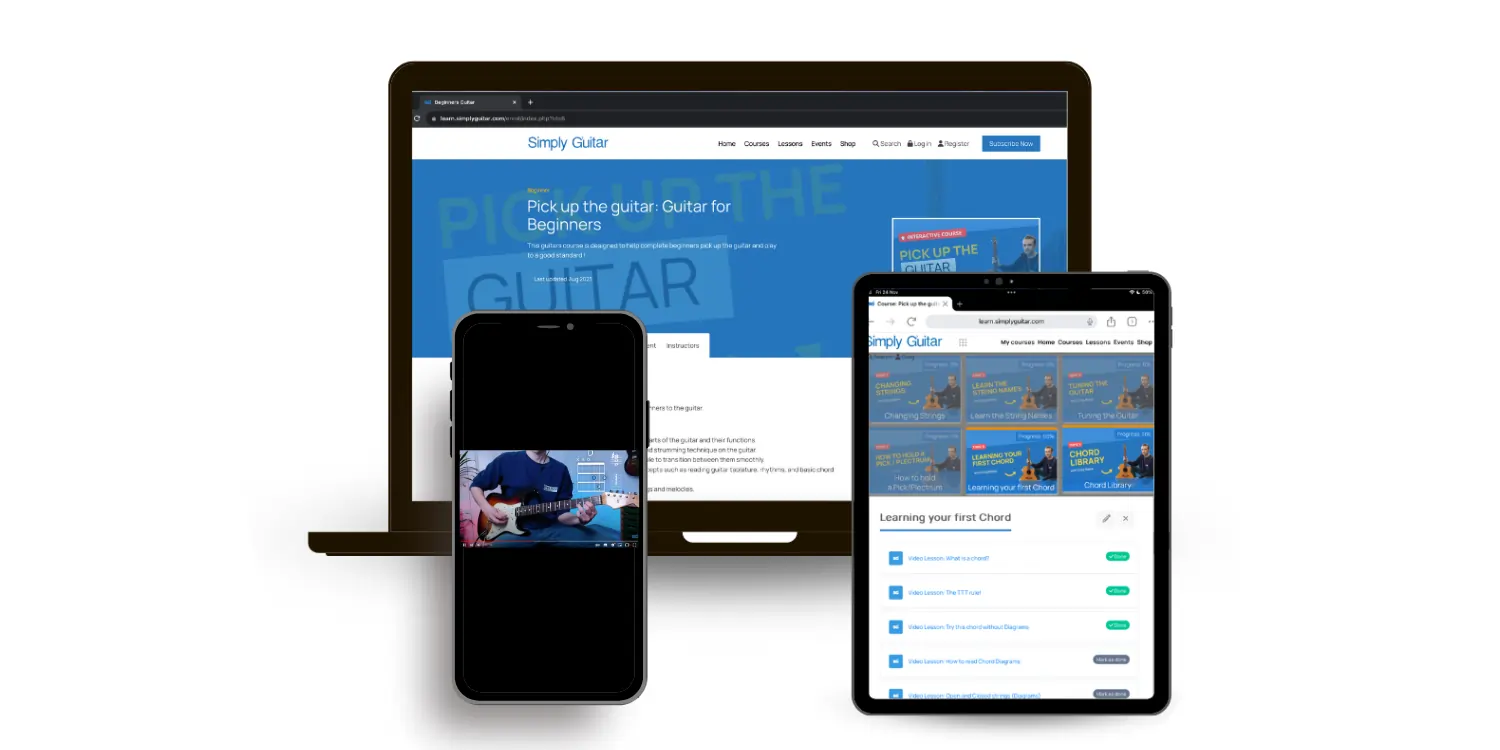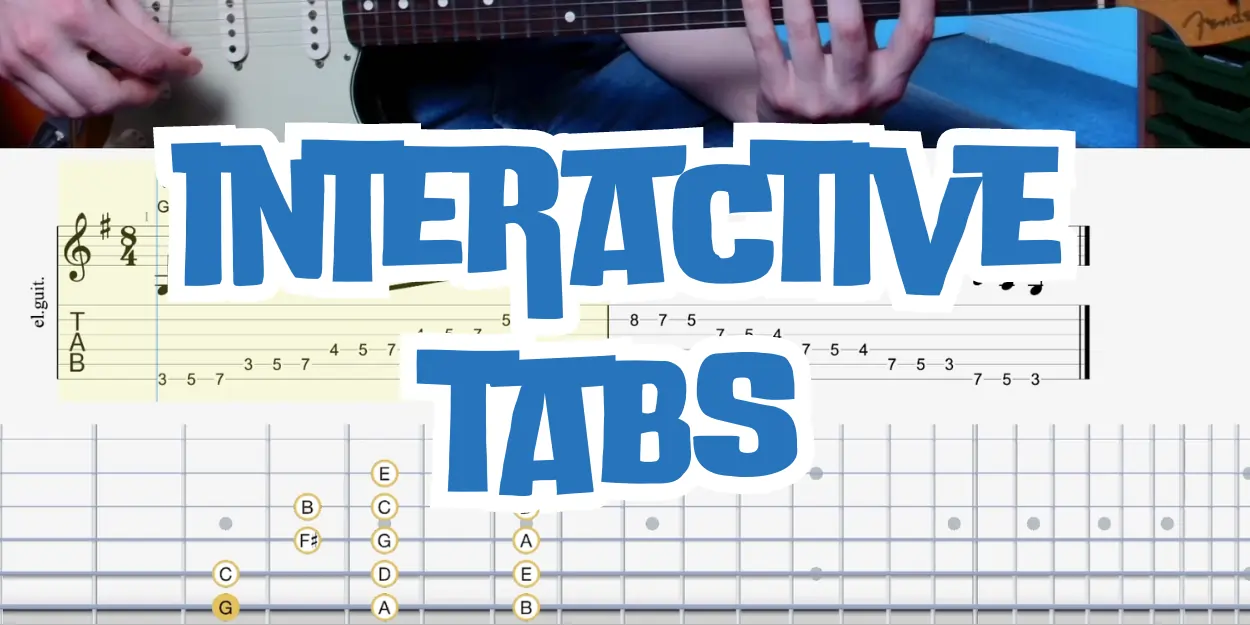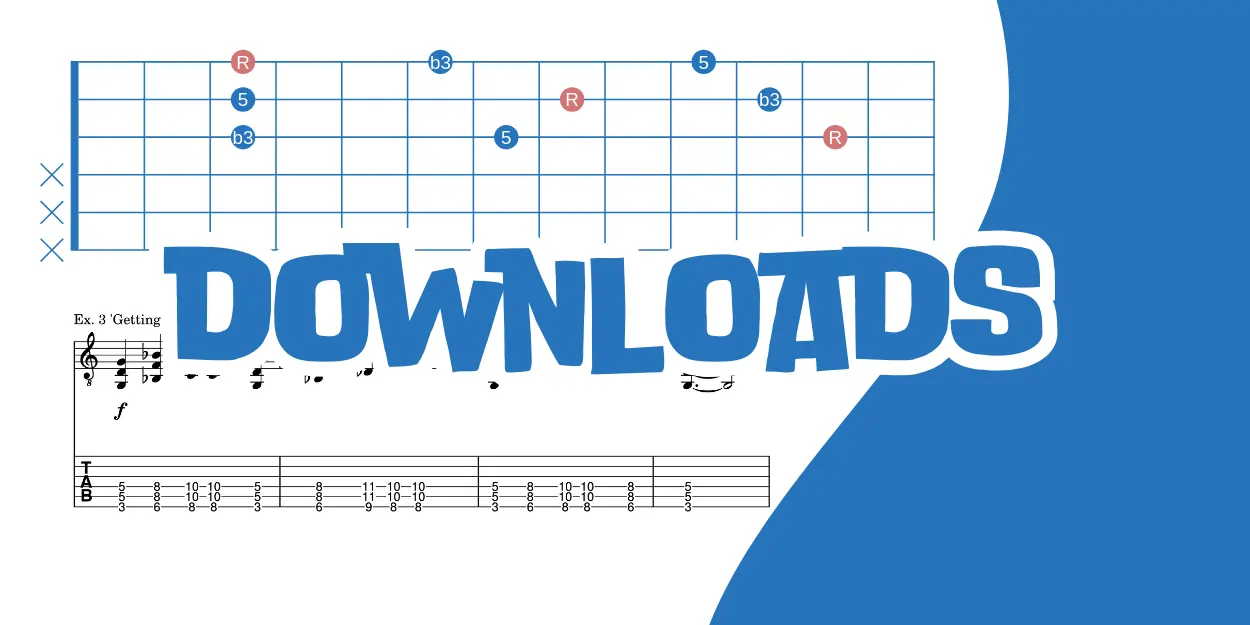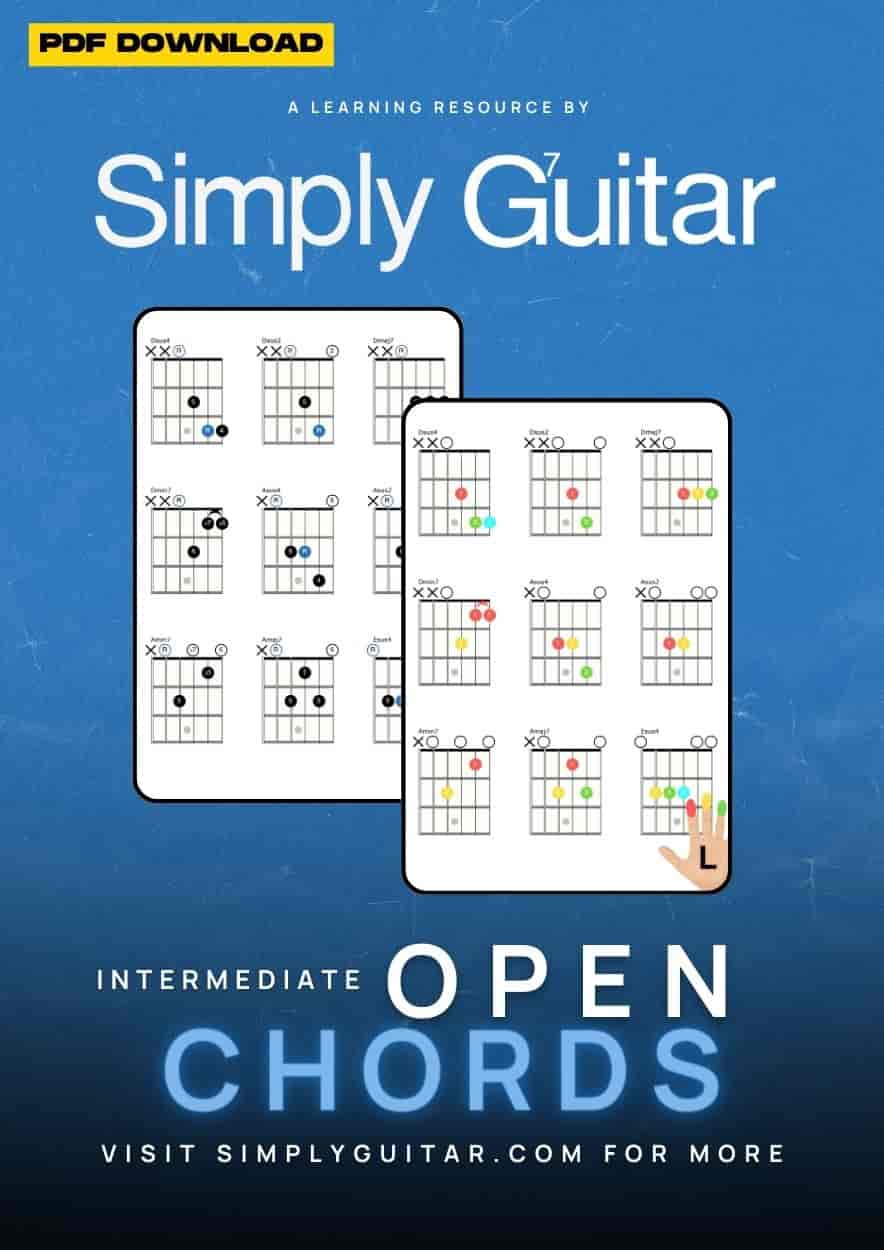Welcome to Simply Guitar! In this lesson, we’ll explore a range of 7th and suspended chords that are crucial for intermediate guitar players. The chords we’ll cover include Dsus4, Dsus2, Dmaj7, Dmin7, Asus4, Asus2, Amin7, Amaj7, Esus4, Em7, Cmaj7, Csus4, Csus2, Fmaj7, Fsus4, Fsus2, and Cadd9. To download a copy of the PDF, make sure you’re logged in and use the button on the right-hand side.
Why Use Simply Guitar Lesson Resources for Learning Guitar?
Simply Guitar offers comprehensive lesson resources that cater to both beginners and intermediate players. We ensure you learn with proper fingering techniques, making your practice sessions effective and enjoyable. Here’s an example of how we illustrate the correct fingering for the chords:

But How About Learning the Intervals?
Understanding the intervals within chords is key to mastering the guitar. At Simply Guitar, we provide detailed visual aids to help you grasp these concepts. Check out the intervals for the 7th and suspended chords here:

What Is a Suspended Chord and Why Should We Learn Them?
A suspended chord, often written as sus2 or sus4, replaces the third of the chord with either a second (sus2) or a fourth (sus4). This creates a sound that is neither major nor minor, offering a sense of tension and suspense. Learning suspended chords is important because they provide a unique sound that adds variety and interest to your playing. They are commonly used in pop, rock, and folk music to create a more open, unresolved sound.
What Are Major and Minor 7th Chords?
Major 7th Chords (maj7): A major 7th chord consists of a major triad plus a major seventh. This chord has a rich, lush sound often used in jazz, pop, and R&B. Examples include Dmaj7, Amaj7, Cmaj7, and Fmaj7.
Minor 7th Chords (min7): A minor 7th chord is made up of a minor triad plus a minor seventh. This chord has a mellow, soulful sound, perfect for jazz, blues, and funk. Examples include Dmin7, Amin7, and Em7.
How to Learn Guitar Chords as a Beginner
- Start with Basics: Begin by familiarising yourself with each chord individually. Focus on proper finger placement and clear sound production.
- Consistent Practice: Dedicate a set amount of time each day to practice. Regular practice helps build muscle memory.
- Use Visual Aids: Utilise chord diagrams and instructional videos to reinforce your learning.
- Transition Practice: Work on transitioning smoothly between chords. Start slowly and increase your speed as you gain confidence.
- Play Songs: Integrate these chords into songs you enjoy. This practical application reinforces your learning and keeps practice enjoyable.
- Leverage Resources: Utilise Simply Guitar’s lesson resources to guide your practice and provide structured learning paths.
Our Lesson Resources Are Designed for Guitar Players and Teachers Alike
Simply Guitar’s resources are crafted to benefit both self-learners and instructors. Beginners will find our step-by-step guides and visual aids incredibly helpful for developing good playing habits from the start. For teachers, our resources offer a structured curriculum that supports student progress.
Our materials include chord diagrams, interval charts, and practice exercises that accommodate various learning styles. Whether you prefer visual, auditory, or practical learning, Simply Guitar has you covered.
Thank you for exploring our intermediate chord lessons at Simply Guitar. We are dedicated to supporting your musical journey and helping you become a proficient guitarist. Good luck!
Learn Guitar Techniques and Skills









